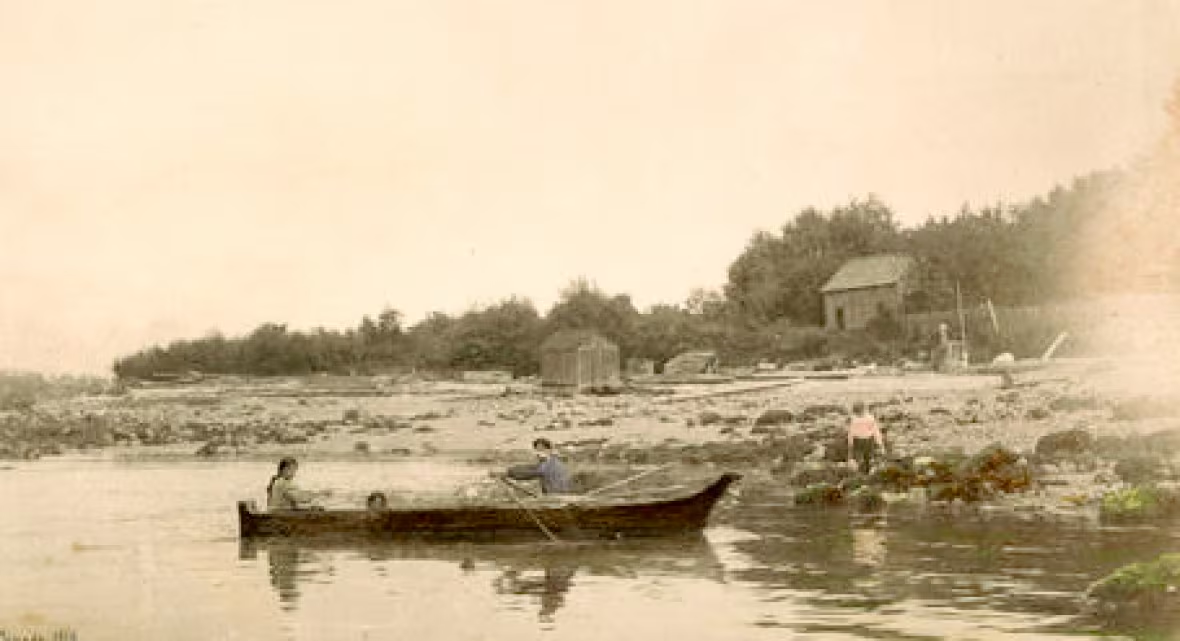'Welcome to Sen̓áḵw': A sneak peek inside Canada's largest Indigenous-led housing development
CBC Vancouver’s The Early Edition was offered a tour of the building as part of a special live broadcast

Mindy Wight is riding in a hoist elevator on the side of a tall residential building going up, up, up to the 26th floor, exposing a view of downtown Vancouver and English Bay as it climbs.
"Seeing the towers coming to life and how fast the development is going — words can't describe it," said Wight, the CEO of the Squamish Nation's economic development arm, the Nch'kay Development Corporation.
"It's been amazing."
Below, workers and construction vehicles surround the busy work site named Sen̓áḵw, which comprises more than 6,000 rental units and 1,200 homes across 11 towers on 4.2 hectares of Squamish Nation land at Kits Point adjacent to Vanier Park.

CBC was recently offered a sneak peek of the building as part of a special live broadcast of The Early Edition on Friday, Feb. 7, which will also highlight the Squamish Nation's culture, community, and ongoing initiatives.
"There are two sides to this story. It's learning the history for the Squamish people and bringing a presence back to the land for Squamish families," Wight says of Sen̓áḵw.
"It's also economic reconciliation, so the power of partnering with First Nations in Canada to do large scale projects that benefits not just this nation but the broader community."
'You can't help but feel proud'
The Squamish Nation began building the tower in September 2022, after a decades-long court battle that began in the 1970s and ended in 2002 with a $92-million deal that returned a prime, Y-shaped slice of land back to the nation.
Centuries ago, Sen̓áḵw was a plentiful summer village — rich with clams, mussels, ducks, seals and even elk. About 20 families called it home, but by the late 1800s, the expanding City of Vancouver was circling.

The first units in Sen̓áḵw are scheduled to be available to rent by the end of this year — 112 years after the provincial government forcibly removed its occupants, according to the project's website.
At a groundbreaking ceremony, the Squamish Nation said the development is the largest Indigenous-led housing and retail development in the history of Canada. The federal government provided the Squamish Nation with a $ 1.4 billion loan to build 3,000 of the units.
Squamish Nation member George Hemeon says the nation's fight to regain the land was worth it.
"There's going to be Squamish Nation youth and their children's children living here in this village," said Hemeon, who is also the vice president of Indigenous Relations for the construction management company leading the development, Peak Construction.
"You can't help but feel proud."
Another part of the nation's goal was to recruit Indigenous people to work on the project.
Hemeon says the nation didn't just want to hire low-skilled workers on contract and have them leave with the same skills. Instead, the site is both an employment and a training opportunity.
"By connecting them with the different trades and having discussions around career paths, we can blend both the education and the work experience," he said.
"So if someone wants to get a Red Seal ticket (a trades certification), they're on that path, and they're fully supported in doing it."
Focus on Squamish culture and design
Squamish culture is at the forefront of the building's design.
Jacob Lewis is the chair of the committee ensuring Squamish identity is at the heart of Sen̓áḵw. Lewis says the plan is to use the committee to inform art and design through all Squamish developments.
"There's a distinct Coast Salish style of art, and making sure we're in alignment with that," he says.
"We don't want to be inauthentic to ourselves and to our people."

Some of these features will be visible from afar, from vantage points in the West End, and to anyone travelling across the Burrard Bridge.
But others can only be noticed up close.
Lewis says Squamish identity and language will feature in the wayfinding signs, the elevators, and the landscaping.
A walkable village
The development has prompted some criticism from nearby residents — mainly due to the large number of units on such a small parcel of land in the city.
In 2022, a group representing residents in part of Vancouver's Kitsilano neighbourhood took the city and the Squamish Nation to court, asking a judge to quash the agreement that secured the development.
The association said the city didn't give residents a fair chance to offer feedback or express concerns about it.
Wight says developers on reserve land don't have to abide by city rules around issues like building height, complex density and requirements to provide amenities like park space.
"The nation is using this land to advance its economic independence, so that's where the concept of densification, 6,000 units, came from," said Wight.
"We do want to be good neighbours, but this is a project owned by the nation."

One specific aspect of the development that has garnered criticism is that the site will only include 800 parking spaces for all residents.
Wight says Sen̓áḵw is built on the concept of walkability within the site itself, with amenities close by. She says there will also be space for bike storage, and the nation is in talks with TransLink about opportunities for transit services in the area.
"I'm hoping that … that most people will choose a lifestyle where they don't need a car," Wight said.
"We'll have car share and transit if they need it, but it's focused on green living."
The nation says it does intend to rely on the city for police, fire services, utilities and public works.
Corrections
- A previous version of this story identified George Hemeon as a Squamish Nation councillor. He is, in fact, a member of the Squamish Nation, but not a councillor.Feb 07, 2025 10:42 AM EST
With files from Alan Regan, Stephen Quinn and Rhianna Schmunk

